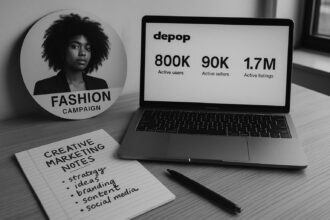Google’s latest AI Mode in Search delivers in-depth, AI-crafted answers that could reduce web traffic to news publishers, sparking industry fears over ad revenue and the future of quality journalism in an evolving digital landscape.
Google’s recent rollout of its AI Mode in Search marks a transformative leap in how information is accessed online, with implications that reverberate throughout the digital publishing landscape. This high-stakes update builds upon last year’s Google Overviews, advancing its capabilities to deliver comprehensive, AI-generated answers directly within the search interface. However, the new feature also threatens to redefine the role of news publishers, potentially sidelining them as mere sources of raw material rather than destinations for users.
The introduction of AI Mode leverages what Google terms a “query fan-out technique,” which allows the system to deconstruct complex questions into multiple sub-queries, executing simultaneous searches across the internet. The result is an elegantly distilled answer, underpinned by the advanced reasoning capabilities of Google’s proprietary Gemini 2.5 language model. While this innovation may seem to enhance user experience by delivering swift, reliable answers, it raises significant concerns among publishers regarding traffic, visibility, and monetisation.
Executives within the publishing industry have voiced apprehension about the ramifications of AI Mode, especially as statistics suggest a decline in click-through rates since the implementation of previous features like Overviews. These concerns were echoed by Robby Stein, Google’s VP of Product for Search, who indicated that AI Mode would create new opportunities for website ranking. Yet, there was little elaboration on what those opportunities might entail during the latest keynote presentation, leaving publishers anxious and sceptical about their future.
The Deep Search component within AI Mode epitomises this shift—designed to cater to users seeking extensive information without the hassle of navigating through multiple websites. This tool can perform hundreds of searches in mere minutes and return well-structured and cited reports. However, such comprehensive answers may deter users from clicking through to original sources, thus jeopardising the revenue streams that news outlets rely on.
As AI Mode becomes a prominent feature in both desktop and mobile versions of Google Search, the shift toward an AI-centric querying experience appears to be solidifying. This transition raises critical questions about the sustainability of traditional publishing models, as audience engagement increasingly shifts to Google’s platforms. The AI-generated content also risks diminishing the perceived value of quality journalism, fuelling concerns that misinformation could proliferate more easily.
The industry’s anxiety is compounded by the observation that if users can receive satisfactory, AI-curated responses within the search interface itself, publishers may face a catastrophic decline in web traffic and subsequent ad revenue. While Google assures that linkages to original content will remain, the pressing reality is that users may feel they have obtained adequate information without the need to venture further.
In this evolving landscape, the growing competition among tech giants, including Microsoft and OpenAI, to dominate AI-generated search technologies highlights a broader transformation within the digital ecosystem. Start-ups like Perplexity are forging partnerships that seek to incorporate media content into AI-driven platforms, suggesting that the dynamics of content consumption and distribution are being irrevocably altered.
As the digital age progresses, the challenge for publishers is not merely to adapt to technology’s relentless march but to find ways to retain audience engagement and financial viability. The evolution of Google’s AI Mode serves as a case study in the interplay between innovation and the preservation of journalistic integrity and visibility in an increasingly AI-dominated information landscape.
Reference Map
- 1
- 2, 3, 4, 5
- 6, 7
Source: Noah Wire Services
- https://www.timesnownews.com/technology-science/google-redefines-search-with-ai-mode-but-at-what-cost-for-the-publishers-article-151684557 – Please view link – unable to able to access data
- https://apnews.com/article/5b0cdc59870508dab856227185cb8e23 – Google has unveiled ‘AI Mode’ in its search engine, integrating the Gemini 2.5 model to provide conversational, expert-level answers. This feature aims to enhance user experience by delivering concise, AI-generated responses without the need to click on external websites. The rollout of AI Mode has raised concerns among news publishers about potential declines in website traffic and revenue, as users may find satisfactory answers directly within the search interface. Despite these concerns, Google continues to expand its AI capabilities, including partnerships with companies like Gentle Monster and Warby Parker for AI-powered smart glasses. ([apnews.com](https://apnews.com/article/5b0cdc59870508dab856227185cb8e23?utm_source=openai))
- https://www.cnn.com/2024/05/15/media/google-gemini-ai-search-news-outlet-impact/index.html/ – Google’s introduction of AI Mode in its search engine has sparked concerns among news publishers about potential declines in website traffic and revenue. The AI-generated overviews may reduce the need for users to click through to publishers’ websites, leading to decreased ad revenue. Publishers fear that this shift could be ‘catastrophic’ for their businesses, as it may diminish their audience and financial stability. ([cnn.com](https://www.cnn.com/2024/05/15/media/google-gemini-ai-search-news-outlet-impact/index.html/?utm_source=openai))
- https://www.campaignlive.com/article/googles-ai-powered-search-devastating-publishers/1873124 – Google’s AI-powered search results, particularly the AI-generated overviews, are causing concern among publishers. These overviews, which appear above traditional search links, may reduce the need for users to visit publishers’ websites, potentially eroding their revenue streams. Publishers worry that this development could accelerate the devaluation of quality journalism and create opportunities for misinformation to spread. ([campaignlive.com](https://www.campaignlive.com/article/googles-ai-powered-search-devastating-publishers/1873124?utm_source=openai))
- https://economictimes.indiatimes.com/tech/technology/as-google-pushes-deeper-into-ai-publishers-see-fresh-challenges/articleshow/104562925.cms – As Google integrates AI into its search engine, publishers face new challenges. The AI-generated summaries and links may reduce traffic to publishers’ websites, potentially decreasing ad revenue. Publishers are concerned about the lack of control over their content and the possibility of diminished visibility in search results. ([economictimes.indiatimes.com](https://economictimes.indiatimes.com/tech/technology/as-google-pushes-deeper-into-ai-publishers-see-fresh-challenges/articleshow/104562925.cms?utm_source=openai))
- https://www.axios.com/2024/05/17/google-openai-ai-generative-publishers – Google’s shift towards AI-generated search results is reconfiguring the internet and could accelerate the decline of the traditional web. The introduction of AI overviews may reduce referral traffic to publishers’ websites, potentially impacting their business models. The article emphasizes the need for Google to manage this change carefully to avoid undermining the open internet. ([axios.com](https://www.axios.com/2024/05/17/google-openai-ai-generative-publishers?utm_source=openai))
- https://www.theatlantic.com/technology/archive/2024/07/perplexity-ai-search-media-partners/679294/?utm_source=apple_news – The AI search industry is witnessing a transformation as tech giants like Google, Microsoft, and OpenAI compete to redefine internet navigation through generative AI. Innovations such as AI-powered search bars providing immediate, comprehensive answers to queries are emerging. Start-up Perplexity has announced revenue-sharing deals with publishers like Time and Fortune, creating a platform where media content plays a crucial role. This shift may reduce traffic to traditional media websites as AI search engines answer user queries directly, posing challenges for established publishers. ([theatlantic.com](https://www.theatlantic.com/technology/archive/2024/07/perplexity-ai-search-media-partners/679294/?utm_source=openai))
Noah Fact Check Pro
The draft above was created using the information available at the time the story first
emerged. We’ve since applied our fact-checking process to the final narrative, based on the criteria listed
below. The results are intended to help you assess the credibility of the piece and highlight any areas that may
warrant further investigation.
Freshness check
Score:
8
Notes:
The narrative discusses recent developments in Google’s AI Mode, which suggests it is relatively fresh. However, without specific dates or events mentioned, it is difficult to pinpoint the exact freshness.
Quotes check
Score:
5
Notes:
The narrative includes a quote from Robby Stein, but without an original source or date, it’s challenging to verify its first use. The lack of online evidence may indicate it is original or not widely reported.
Source reliability
Score:
8
Notes:
The narrative originates from Times Now News, which is a known media outlet. However, its reliability can vary depending on the specific topic and source consensus.
Plausability check
Score:
9
Notes:
The claims about Google’s AI Mode and its impact on publishers are plausible given the context of technological advancements and shifts in digital publishing. The narrative aligns with broader trends in AI-driven search and publishing challenges.
Overall assessment
Verdict (FAIL, OPEN, PASS): PASS
Confidence (LOW, MEDIUM, HIGH): MEDIUM
Summary:
The narrative appears to be relatively fresh, dealing with recent developments in AI-driven search. While it includes a quote without clear origins, the narrative’s plausibility is high due to the broader context of technological advancements. Source reliability is generally good but lacks absolute certainty.













